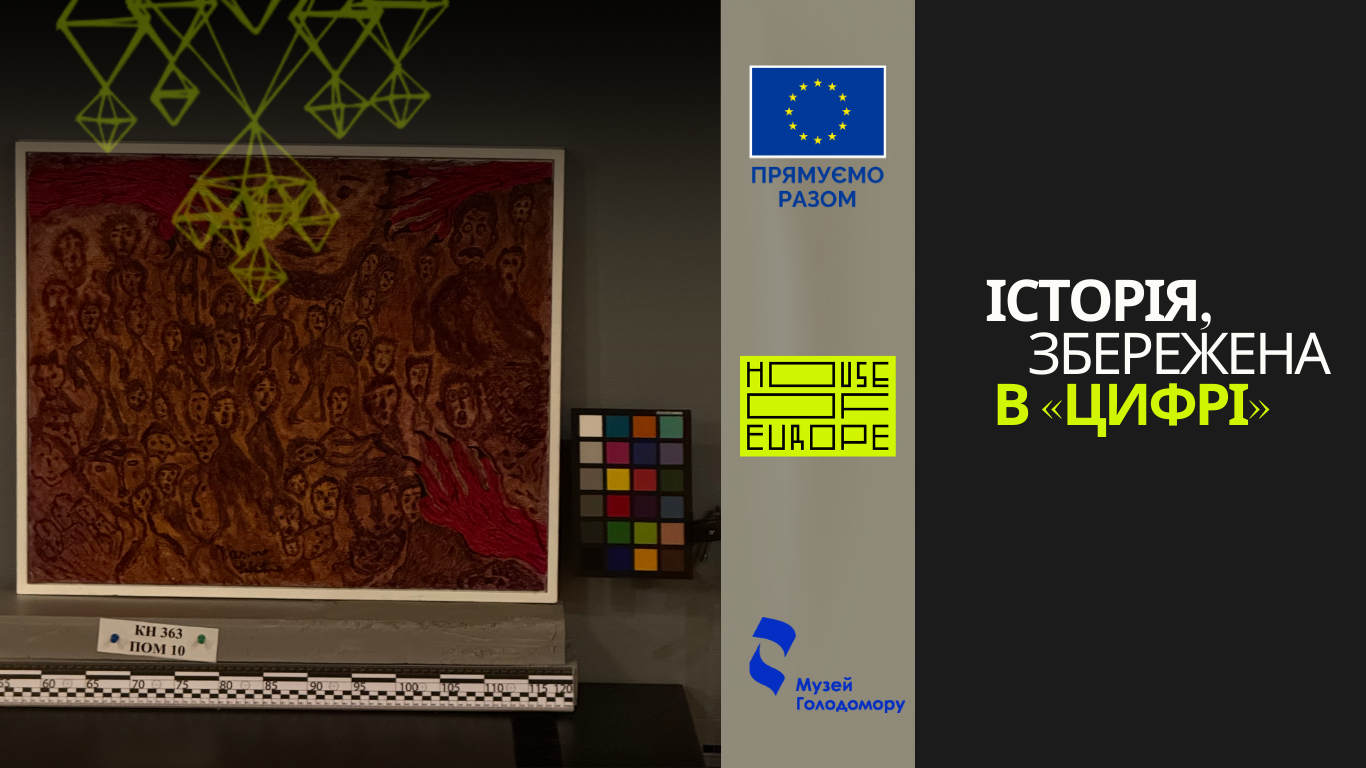Paintings by Italian artist Sabatino Scia digitised
As part of the project “History Preserved in Digital Format,” we are gradually converting our collection of paintings into digital form. Today, we want to discuss the works of the Italian artist Sabatino Scia from his series titled “The Genocide of Ukrainians.”
Sabatino Scia is a Neapolitan artist and storyteller. “I have always felt the value of historical memory and ethics in my work,” the artist says. His interest in history and his desire to understand the past led him to reflect on the tragedy of the Holodomor, which he first learned about from Robert Conquest’s book The Harvest of Sorrow.
Sabatino Shia’s paintings explore themes such as collectivisation, dekulakisation, mass mortality, the portrayal of Stalin as a dictator, and the living conditions in a totalitarian society. For example, his painting “The Collective Farm Was Really Like This!” illustrates the powerlessness of peasants under the totalitarian regime, while “Communist Christmas Tree” depicts the distortion of Ukrainian traditions.
Sabatino Scia’s paintings are characterised by one-dimensional figures, “fairytale” imagery, and the use of soft, bright colours combined with simple, almost childlike features. This contrast between the fairytale simplicity of the technique and the cruelty of the events depicted creates a powerful emotional impact in his works.
His paintings surprise with the unexpected brightness of the colour scheme, which is dissonant with the tragedy of the subject. While many artists choose dark shades to depict such events, Scia fills his canvases with vibrant colours. The artist calls the colours the main characters of his works. He strives to create a “euphony of colours”, similar to the melody of words in a fairy tale, to make a complex topic accessible to a wide range of people.
Symbolism plays a crucial role in his work. The red cows in chains represent the defenceless victims of communist policies. The figure of a green Jesus symbolises the destroyed villages and starving peasants. A combination of green, blue, and yellow allegorically represents the harvested crops, the sky, and the ears of grain. The ghostly brown, black, and green animals on what was once fertile land convey a sense of loss and devastation. The images of predators among the cows symbolise the vulnerability of the peasants in the face of a cruel government. The snakes represent betrayal and communism.
Sabatino Scia’s art boldly addresses the tragic chapters of history through a vibrant use of colour and symbolism. His works are significant for understanding and preserving the memory of the Holodomor.
The project “History Preserved in Digital Format” is supported by the European Union through the “House of Europe” program. Stay tuned for updates to learn more about the project implementation.
